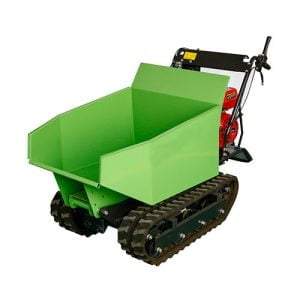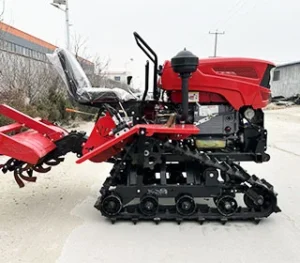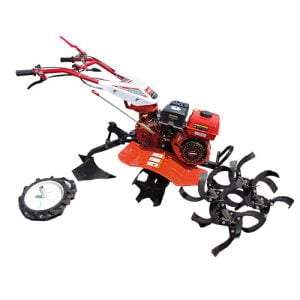How to Choose the Best Hand Push Tractor for Your Garden
Introduction
Gardening can be both a relaxing hobby and a rewarding endeavor, but it also requires the right tools to ensure success. One of the most versatile and essential tools for any serious gardener is a hand push tractor. This compact, manually-operated machine helps in various tasks, from tilling soil to planting seeds. Choosing the best hand push tractor for your garden can significantly enhance your gardening experience and productivity. This comprehensive guide will walk you through everything you need to know to make an informed decision.
Understanding Hand Push Tractors
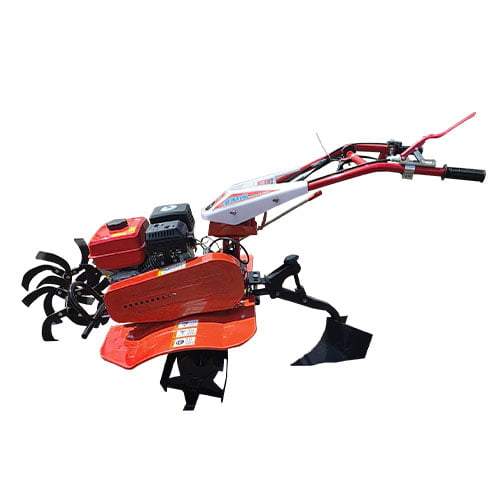
What is a Hand Push Tractor?
A hand push tractor, also known as a walk-behind tractor or two-wheel tractor, is a small, manually-operated agricultural machine designed for small-scale farming and gardening tasks. These machines are equipped with a variety of attachments that allow them to perform multiple functions, such as plowing, tilling, weeding, and more.
Key Features of Hand Push Tractors
- Compact Size: Easy to maneuver and store, ideal for small gardens and tight spaces.
- Versatility: Can be used with various attachments to perform different gardening tasks.
- Manual Operation: Provides greater control and precision in handling.
- Durability: Built to withstand the rigors of regular use in gardening and small-scale farming.
Factors to Consider When Choosing a Hand Push Tractor
Garden Size and Terrain
The size and terrain of your garden are crucial factors to consider when selecting a hand push tractor. Larger gardens with uneven or hilly terrain may require a more powerful and robust model, while smaller, flat gardens can be efficiently managed with a lighter, more compact machine.
Types of Attachments
Hand push tractors can be equipped with a variety of attachments, such as plows, tillers, seeders, and mowers. Consider the tasks you will be performing in your garden and ensure that the tractor you choose is compatible with the necessary attachments.
Engine Power and Fuel Type
The engine power of a hand push tractor determines its performance and efficiency. Models with higher horsepower are suitable for more demanding tasks and larger gardens. Additionally, consider the fuel type—gasoline-powered tractors are common, but there are also electric models that are more environmentally friendly and quieter.
Build Quality and Durability
Investing in a hand push tractor made from high-quality materials ensures longevity and reliability. Look for models with robust construction and durable components that can withstand regular use and harsh conditions.
Ease of Use and Maintenance
Choose a hand push tractor that is easy to operate and maintain. Features such as ergonomic handles, adjustable controls, and simple attachment mechanisms enhance user experience. Additionally, consider the availability of spare parts and service support for maintenance and repairs.
Table: Comparison of Popular Hand Push Tractors
| Model | Engine Power (HP) | Fuel Type | Key Features |
|---|---|---|---|
| Varyon 3TGQ-4A | 5.36 | Gasoline | Gear lever handle, multiple functions optional |
| Troy-Bilt TB146 EC | 29cc | Gasoline | JumpStart engine, adjustable tilling width |
| Earthquake 20015 Versa | 99cc | Gasoline | Convertible from tiller to cultivator |
| Sun Joe TJ604E | 13.5 Amp | Electric | Electric start, foldable handle |
| Greenworks 27072 | 8 Amp | Electric | Adjustable tilling width, easy start |
Benefits of Using a Hand Push Tractor
Increased Efficiency
Hand push tractors significantly increase gardening efficiency by performing various tasks quickly and effectively. Their ability to handle multiple functions with different attachments saves time and effort, allowing you to focus on other important aspects of gardening.
Versatility in Gardening Tasks
The versatility of hand push tractors is one of their most significant advantages. With the right attachments, these machines can till soil, plant seeds, weed, and even mow lawns. This multifunctionality makes them an invaluable tool for any gardener.
Improved Soil Health
Using a hand push tractor for tasks such as tilling and aerating improves soil health by breaking up compacted soil and promoting better air and water circulation. This creates a more favorable environment for plant growth and enhances overall garden productivity.
Cost-Effectiveness
While the initial investment in a hand push tractor may seem significant, the long-term benefits and savings are substantial. These machines reduce the need for manual labor and additional tools, ultimately lowering overall gardening costs.
Environmentally Friendly Options
Many hand push tractors are available in electric models, which are quieter and produce no emissions. These environmentally friendly options are ideal for gardeners looking to reduce their carbon footprint and maintain a peaceful garden environment.
How to Maintain Your Hand Push Tractor
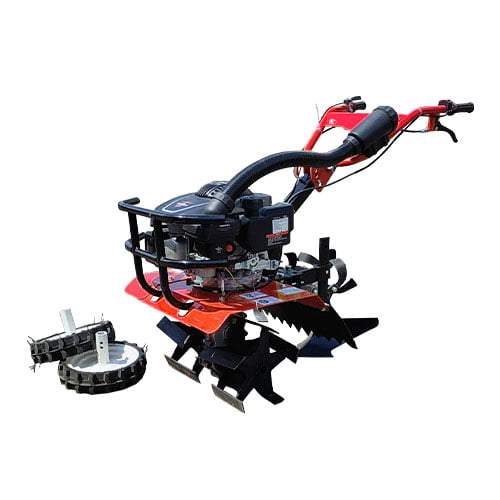
Regular Cleaning
After each use, clean your hand push tractor to remove dirt, debris, and plant material. This prevents buildup that can cause wear and tear on the machine and ensures smooth operation.
Lubrication
Regularly lubricate moving parts such as wheels, gears, and attachments to reduce friction and prevent rust. Follow the manufacturer’s guidelines for the type and frequency of lubrication.
Engine Maintenance
For gasoline-powered models, perform regular engine maintenance, including oil changes, air filter cleaning or replacement, and spark plug inspection. This keeps the engine running smoothly and extends its lifespan.
Inspect and Replace Worn Parts
Regularly inspect your hand push tractor for signs of wear and damage. Replace worn or damaged parts promptly to prevent further issues and maintain the machine’s performance and safety.
Proper Storage
Store your hand push tractor in a dry, sheltered location to protect it from the elements. If possible, cover the machine to prevent dust and moisture buildup. Proper storage extends the lifespan of your tractor and keeps it ready for use.
Conclusion
Choosing the best hand push tractor for your garden involves considering various factors such as garden size, terrain, attachment compatibility, engine power, build quality, and ease of use. By understanding these factors and evaluating different models, you can select a hand push tractor that meets your specific gardening needs and enhances your overall gardening experience. Regular maintenance and proper care will ensure that your hand push tractor remains a reliable and efficient tool for years to come.
FAQ
What is a push tractor?
A push tractor, also known as a walk-behind tractor or two-wheel tractor, is a small, manually-operated agricultural machine designed for various gardening tasks. These machines are equipped with attachments that allow them to perform functions such as tilling, plowing, weeding, and more.
How do I choose the right push tractor for my garden?
To choose the right push tractor, consider factors such as garden size and terrain, types of attachments needed, engine power and fuel type, build quality and durability, and ease of use and maintenance. Evaluating these factors will help you select a tractor that meets your specific needs.
What are the benefits of using a push tractor?
Benefits of using a push tractor include increased efficiency, versatility in gardening tasks, improved soil health, cost-effectiveness, and environmentally friendly options. These machines save time and effort while enhancing overall garden productivity.
How do I maintain my hand push tractor?
Maintain your hand push tractor by regularly cleaning it, lubricating moving parts, performing engine maintenance, inspecting and replacing worn parts, and storing it properly. Following these maintenance steps ensures smooth operation and extends the machine’s lifespan.
Are electric hand push tractors as effective as gasoline-powered models?
Electric hand push tractors can be just as effective as gasoline-powered models, especially for small to medium-sized gardens. They offer the advantages of being quieter, producing no emissions, and requiring less maintenance. However, gasoline-powered models may be more suitable for larger gardens and more demanding tasks.

